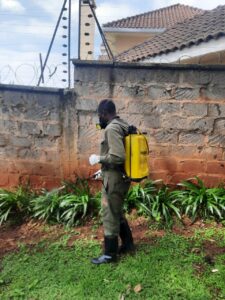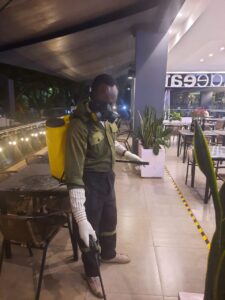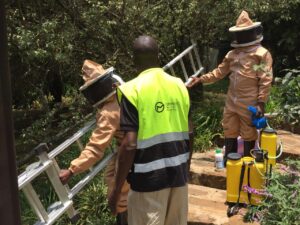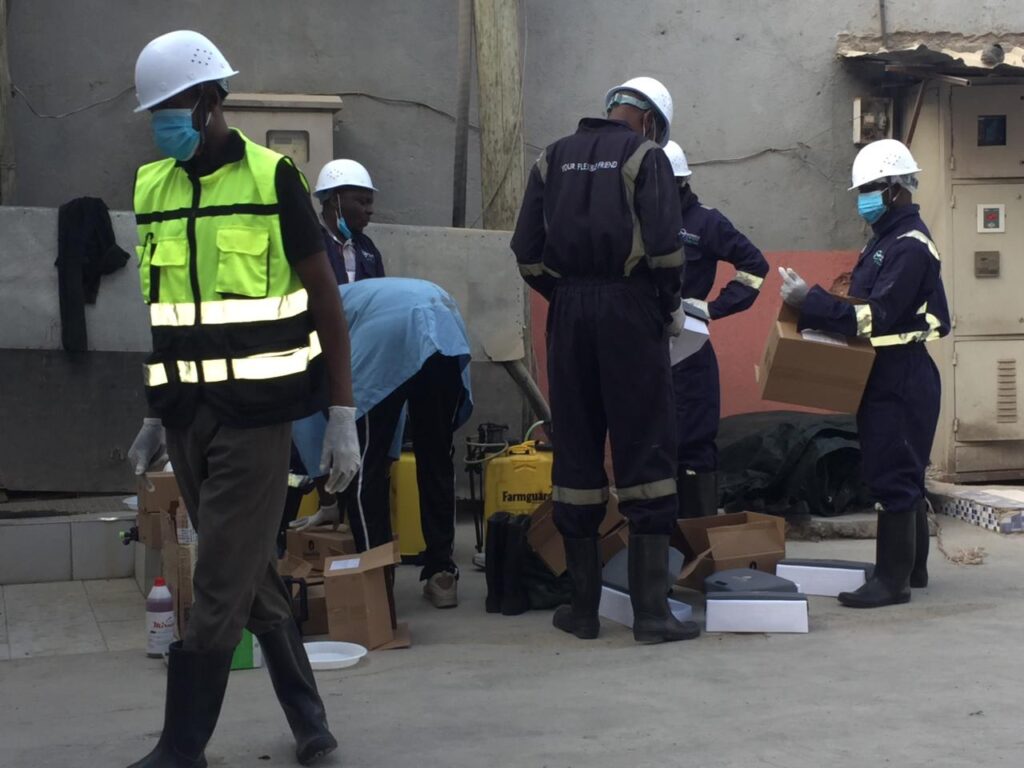Pest infestations can wreak havoc on homes, affecting your quality of life and even posing health risks. House fumigation services offer an effective solution to eradicate pests and restore peace of mind. However, many homeowners may not know what to expect when hiring a fumigation service. This article provides a detailed look at what is included in a house fumigation service, covering everything from initial inspections to post-treatment procedures.
Introduction
 House fumigation is a pest control technique that uses fumigants (gaseous pesticides) to exterminate pests from homes. Unlike regular pest control methods like spraying, which targets visible pests, fumigation penetrates every corner of a home, reaching pests hiding in walls, floors, and furniture. Fumigation can be used to treat a variety of pests, including termites, cockroaches, bedbugs, and rodents.
House fumigation is a pest control technique that uses fumigants (gaseous pesticides) to exterminate pests from homes. Unlike regular pest control methods like spraying, which targets visible pests, fumigation penetrates every corner of a home, reaching pests hiding in walls, floors, and furniture. Fumigation can be used to treat a variety of pests, including termites, cockroaches, bedbugs, and rodents.
The importance of hiring professional fumigation services cannot be overstated. Experts ensure the safe and effective application of fumigants, protecting your household from the harmful effects of chemicals while ensuring that pests are completely eradicated.
Initial Inspection and Assessment
Before the fumigation process begins, a thorough inspection and assessment of your home is critical. This helps the fumigation company determine the severity of the pest infestation and the specific type of pests they are dealing with. Here’s what this phase entails:
Pest Identification
The first step in fumigation is identifying the type of pests present in your home. Whether it’s termites, cockroaches, or rodents, knowing the specific pest helps the fumigator select the right chemicals and treatment strategy. Different pests require different approaches, so proper identification ensures a targeted and effective treatment.
Home Evaluation
The fumigation service will also assess your home’s structure to determine entry points and areas where pests are hiding. This evaluation may include inspecting basements, attics, walls, and crawl spaces. The professionals will identify vulnerable spots in the home that need particular attention during the fumigation process.
Preparation for Fumigation
Once the inspection is complete and the pest control plan is set, the next step is preparing your home for fumigation. The company will provide you with guidelines to ensure that your home is ready for treatment.
Pre-Fumigation Instructions
Homeowners will be required to follow certain instructions before the fumigation begins. These may include:
- Sealing food and water: Any food, drink, or medication that will remain in the house must be tightly sealed to prevent contamination by the fumigants.
- Removing pets: Pets, including fish, reptiles, and birds, should be taken out of the house. Their water and food bowls should also be removed to prevent exposure to chemicals.
- Vacating the property: All residents must leave the house during the fumigation process, as fumigants are toxic. The service provider will give you a timeline for when it’s safe to return.
Protection of Sensitive Items
Sensitive items like electronics, houseplants, and furniture may need special protection or temporary removal. Depending on the fumigant being used, some items might require plastic coverings or removal from certain rooms.
Fumigation Process
Once your home is properly prepared, the actual fumigation process begins. Here’s what happens during this phase:
Use of Chemicals or Natural Alternatives
The fumigation process involves introducing a gaseous pesticide (fumigant) into your home. The choice of fumigant depends on the type of pests and the severity of the infestation. While chemical fumigants are most commonly used, there are eco-friendly options that some pest control companies offer, such as plant-based fumigants or heat treatments. However, chemical fumigants are generally more effective for severe infestations.
Area Coverage and Treatment Duration
Fumigants need to cover every inch of the home, which is why the house is usually sealed tightly before the fumigation begins. This ensures that the fumigant can circulate freely and penetrate all the crevices, walls, and flooring. The treatment may take anywhere from 6 hours to a few days, depending on the size of the house, the type of pest, and the fumigant being used.
The pest control team will monitor the fumigation process closely to ensure even distribution and proper concentration of the fumigant.
Post-Fumigation Procedures
After the fumigation process is completed, post-treatment procedures are essential to ensure that the house is safe for occupancy and that the treatment has effectively eradicated pests.
Ventilation and Safety Measures
 Once the fumigation is complete, the house needs to be ventilated to allow the fumigants to dissipate. The pest control team will open windows and doors to allow fresh air to circulate and may use fans to expedite the process. Special equipment is used to test the air quality and confirm that the fumigants have completely cleared from the home before residents can return.
Once the fumigation is complete, the house needs to be ventilated to allow the fumigants to dissipate. The pest control team will open windows and doors to allow fresh air to circulate and may use fans to expedite the process. Special equipment is used to test the air quality and confirm that the fumigants have completely cleared from the home before residents can return.
Homeowners should avoid re-entering the house until the fumigators give the all-clear, as residual chemicals can pose a health risk.
Follow-Up Inspections and Preventative Tips
Many pest control companies offer a follow-up inspection to ensure that the fumigation was successful and that no pests remain. They may also provide tips for preventing future infestations, such as sealing entry points, fixing leaks, and keeping the home clean.
If any pests persist after fumigation, the company may offer a re-treatment or additional solutions to fully eliminate the problem.
Additional Services
In addition to fumigation, many pest control companies offer a range of additional services to ensure that your home remains pest-free in the long term.
 Pest-Proofing Recommendations
Pest-Proofing Recommendations
After fumigation, the pest control team may recommend measures to pest-proof your home. This could include sealing cracks and crevices, repairing damaged screens, installing door sweeps, and removing sources of food or water that attract pests. These steps can significantly reduce the likelihood of future infestations.
Regular Monitoring and Maintenance Services
For homes located in areas with high pest activity, or for those with a history of pest problems, regular monitoring and maintenance services are highly recommended. These services involve periodic inspections to detect any early signs of a re-infestation and preventive treatments to keep pests at bay.
Conclusion
House fumigation is a comprehensive pest control service that offers a thorough solution for severe infestations. The process begins with an inspection to assess the severity of the problem and prepare the home. Once the fumigation is complete, post-treatment procedures ensure that the house is safe for re-entry and that the treatment has been effective. Additional services such as pest-proofing and regular monitoring help to keep your home pest-free in the long term.
While fumigation is a highly effective solution, prevention remains key to maintaining a pest-free home. Working with a professional fumigation service not only eliminates existing pests but also helps safeguard your home against future infestations. Get in touch with us today for a free no obligation quote.


